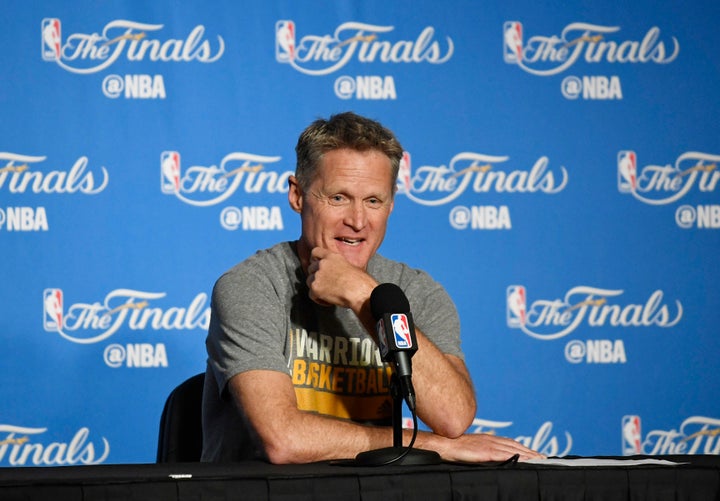
By all accounts, Steve Kerr is a good man. The highly-successful former player and head coach of the NBA’s Golden State Warriors is renowned for both his basketball acumen, his communication skills and his character. So, it stands to reason that he was sorely missed from the sidelines as his Warriors glided through their crucial 2017 NBA Playoff Series. As one headline intoned, “The Warriors without Steve Kerr is like a foot without a big toe.”
That’s why it was all the more difficult to bear witness to the difficulty the 51-year-old Kerr endured due to serious back problems.
CSF Leakage: A Back Surgery Complication
Steve Kerr originally suffered from complications that occurred following back surgery in July 2015, but his problems did not stop there.
The initial surgery to repair a torn herniated disc resulted in an inadvertent nick of the dural membrane (a thin, balloon-like structure that houses cerebral spinal fluid or CSF), causing a tear in that structure and CSF leakage.
CSF provides a protective cushion for the brain and spinal cord. It is contained by the meninges (of which the dura is a part), the sac-like covering that encases the fluid. A leak causes the fluid volume to be lowered, resulting in a drop in pressure around the spinal cord and brain.
The dura is extremely fragile, so a tear can occur inadvertently during surgery. When the incident is apparent during the procedure, the surgeon is immediately able to suture the tear. However, the tear can also ensue following surgery. This is called an “occult dural tear,” which is clearly what happened to Steve Kerr, who began having classic symptoms following his original procedure (i.e., migraines, nausea and dizziness). Although an incidental dural tear is relatively rare (estimates have been as low as one percent for elective disc herniation surgery), the anatomy of this fragile structure makes it especially vulnerable.

Kerr’s occult dural tear was discovered early, and he had a second surgery to repair the leak in September 2015. The second surgery was unsuccessful in resolving his symptoms, requiring a third surgery this May to repair the unresolved CSF leak. After a tentative recovery allowed him to feel some improvement, Steve Kerr returned to the sidelines on June 4 to coach Game 2 of the NBA Finals.
A Neurosurgeon’s Conclusion
The success rate for herniated disc surgery such as the one Steve Kerr initially underwent is typically quite high. At least one extensive medical study revealed that 84 percent of those who have had the surgery showed good or excellent results. It is highly unfortunate Kerr suffered such adverse consequences, although any surgical procedure entails some level of risk.
Understandably, Kerr was frustrated with the physical and professional setbacks he has endured, publically questioning anyone’s decision to undergo back surgery. The medical industry worried about the backlash, but welcomed the attention to his plight and the increased awareness that has resulted. It starts a wider conversation and allows the opportunity for medical experts to comment. We must assure the public that we continually look for ways to deal with surgical risks in our profession, and seek to constantly improve the odds.
